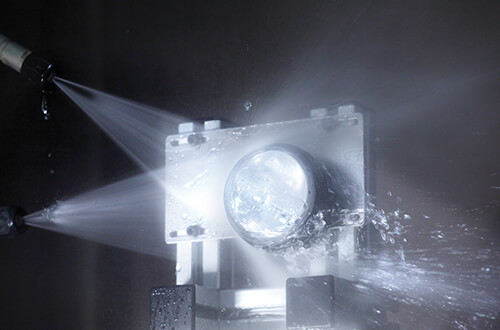|
|
|
|
|
|
|
|
Thermal management in lighting
04-04-2022LED products only provide long-lasting, optimal light output if they are equipped with good thermal management. This prevents the LEDs from overheating and, therefore, from failing. Find out here what makes a good thermal management concept.
The keypoints in short:
- Good thermal management ensures optimal operation of your LED lighting.
- Various components, such as heat dissipating materials and arrangement of components, are of great importance.
- Furthermore, only high-quality LEDs should be used.
- With poor thermal management, a high risk of failure is to be expected due to overheating.
Why thermal management?
Thermal management involves guiding heat away from the LED to get maximum performance out of the technology. The LED’s lifetime depends on the applied current and the operating temperature. If the input current is too high, overheating is possible and the life of the lamp suffers. The following points account for good thermal management in lighting:
- Basis for uniform illumination and high light output
- Optimum temperature range = optimum performance
- Extended lifetime = good investment
- Reduces the risk of failure = more safety thanks to reliable quality
HELLA uses state-of-the-art simulation programmes and long-term product tests. These tests accurately determine the heat flow. In this way, HELLA ensures that the LED technology is effectively protected against overheating and that the lamp meets high quality requirements.
How do you recognise good thermal management?
Good thermal management ensures that heat is distributed evenly over a large area and is dissipated into the lamp's surroundings. Heat dissipation is also supported by cooling fins, which simultaneously improve the housing’s thermal conductivity. HELLA generally relies on:
- Heat conductive materials
- Optimal arrangement of components
Effective thermal management maintains both the excellent quality and the long lifetime of the LEDs in a measurable way. This is accompanied by a high level of reliability, as the risk factor of overheating is eliminated. So you can clearly see that good thermal management is a worthwhile investment for your assurance.
Thanks to good thermal management, the heat is evenly distributed in the lamp.
The most important components of good thermal management
The choice of components is particularly important forgood thermal management. These include heat-dissipating materials such as plastic or foil as well as the cooling fins mentioned and thermal sensors for transmitting temperature. The precise way in which they work together protects the lamp from failure.
Active thermal management
Active thermal management is when the LEDs’ electronic power control system ensures protection against overheating at high ambient temperatures. Special thermal sensors are used here.With the active thermal management in HELLA's LED products, thermal sensors intervene in the system, monitor the LED temperature and automatically regulate the input current downwards as required. The headlamp’s light output is dimmed until the LEDs’ temperature range has normalised. This ensures optimal conditions for operating the LEDs.
Passive thermal management
Passive thermal management is based on the optimal arrangement of components within the lamp, which enables a uniform temperature spread, because effective thermal management begins with the lamp's design.
What are the possible consequences of suboptimal thermal management?
In LED lighting with suboptimal thermal management, the heat on the printed circuit board is not sufficiently dissipated via the heat sink. Due to this poor heat transfer, the LEDs overheat faster, suffer damage and, in the worst case, can fail completely.
A summary of the disadvantages of poor thermal management for lighting:
- Low light output
- Accelerated wear
- Reduced lifetime
- Overheating means downtimes and repair time
These unnecessary risks can be avoided by focusing on high quality and good thermal management for the elements.
Conclusion: Optimal thermal management for your LEDs
Good LED lighting is also characterised by its effective thermal management. Thanks to good thermal management, you benefit from a long service life and little wear. HELLA's decades of expertise in the development of lighting and electronic products guarantees you the highest quality with added safety and reliability.




